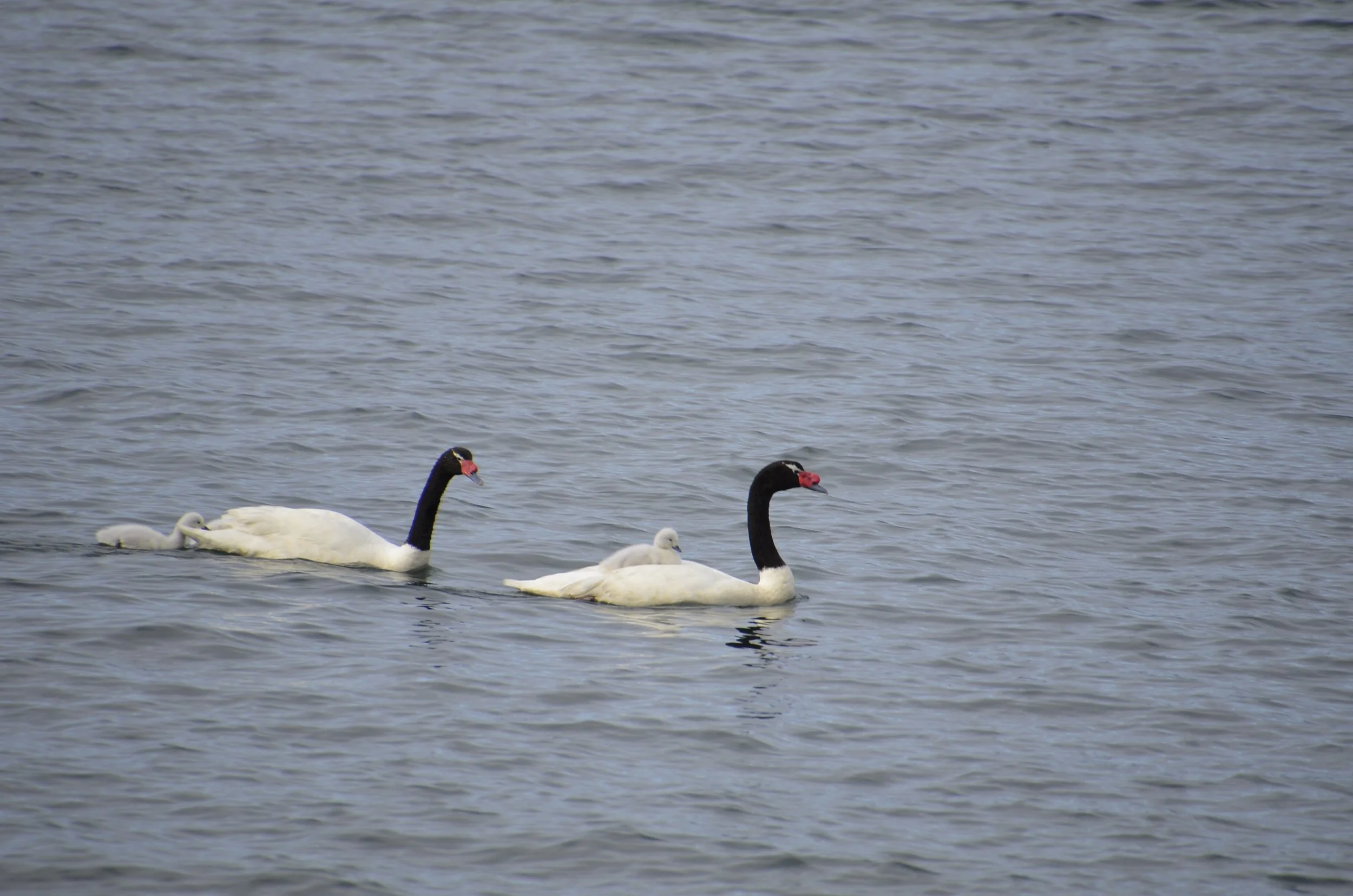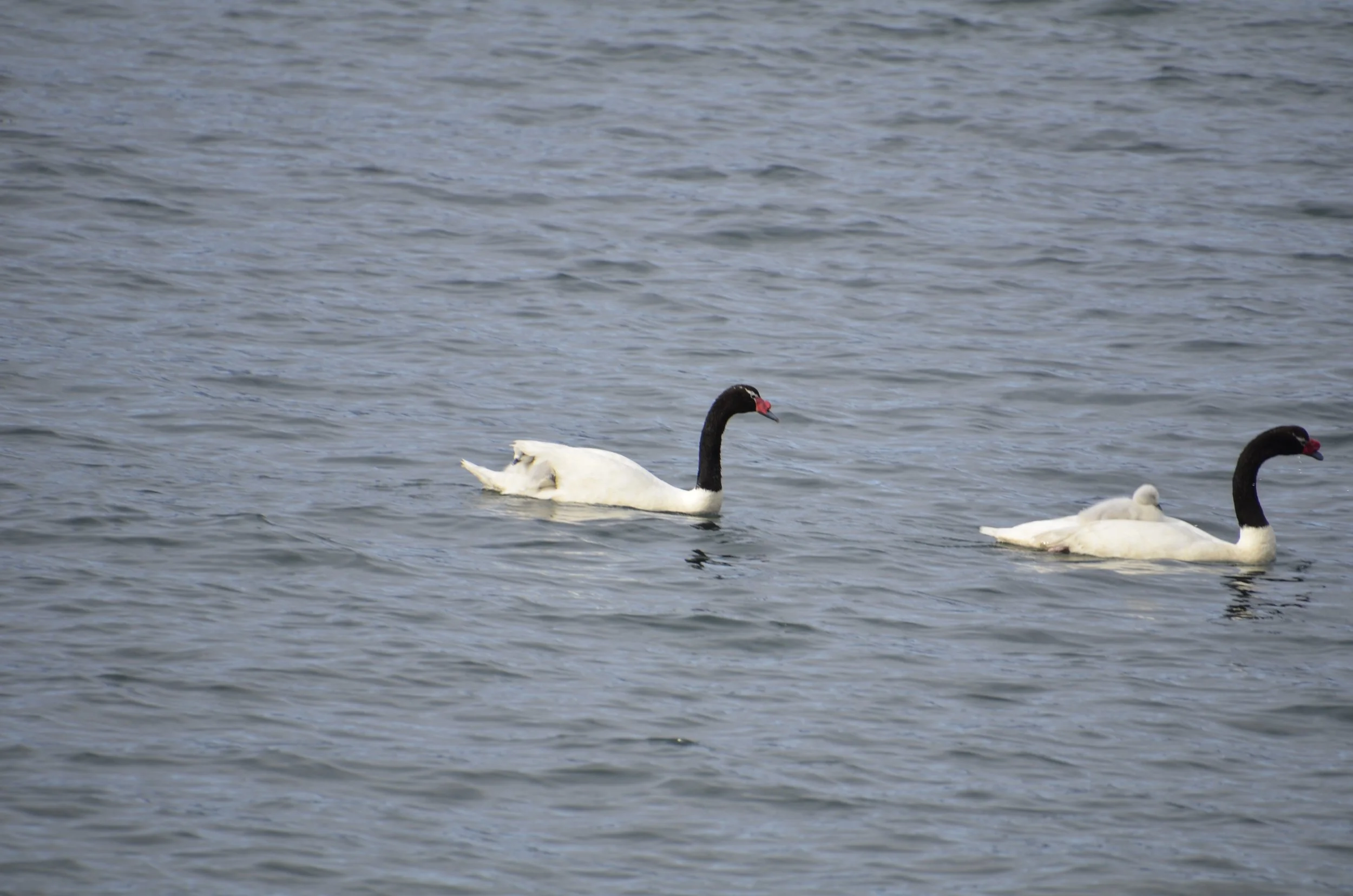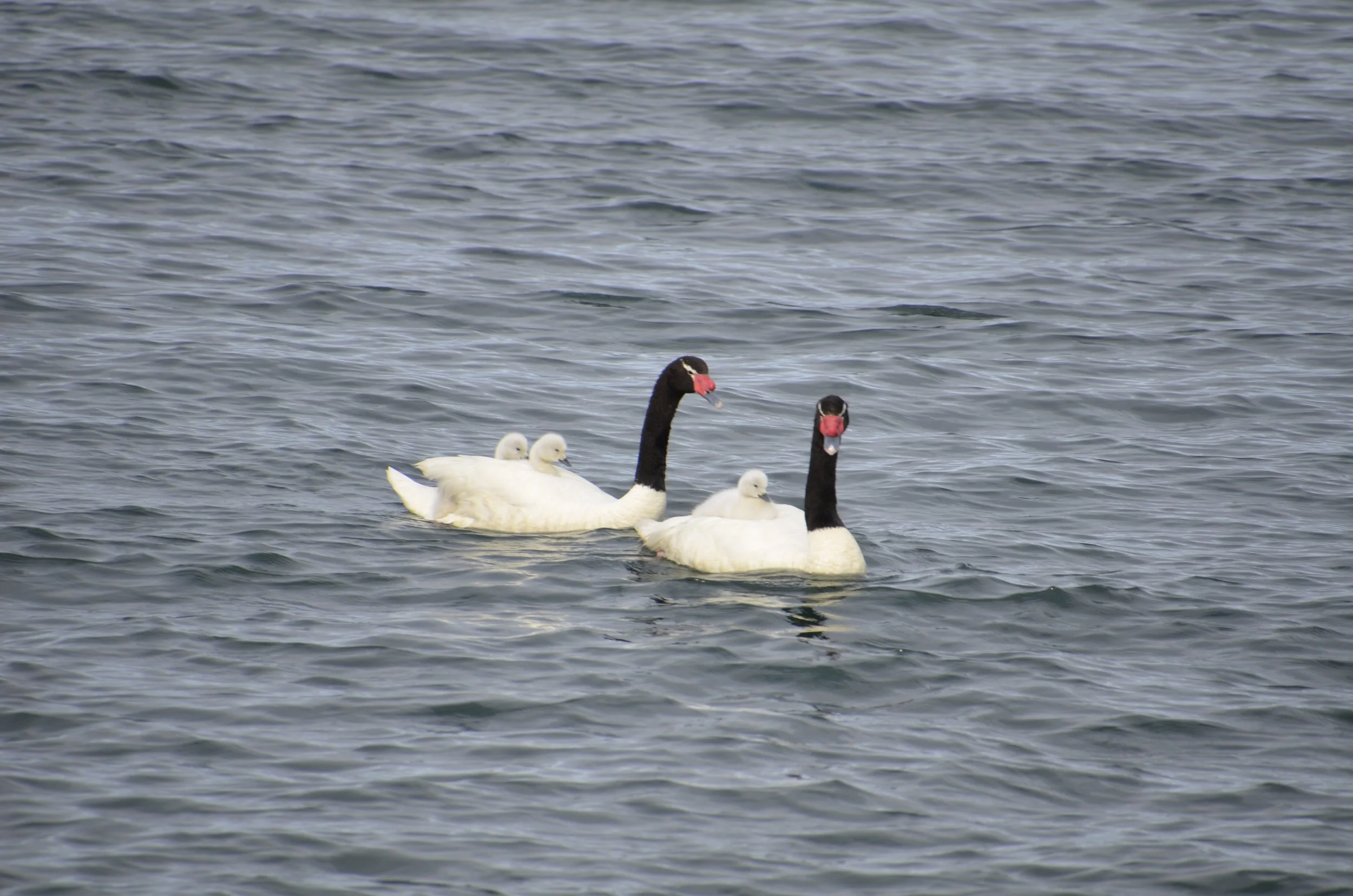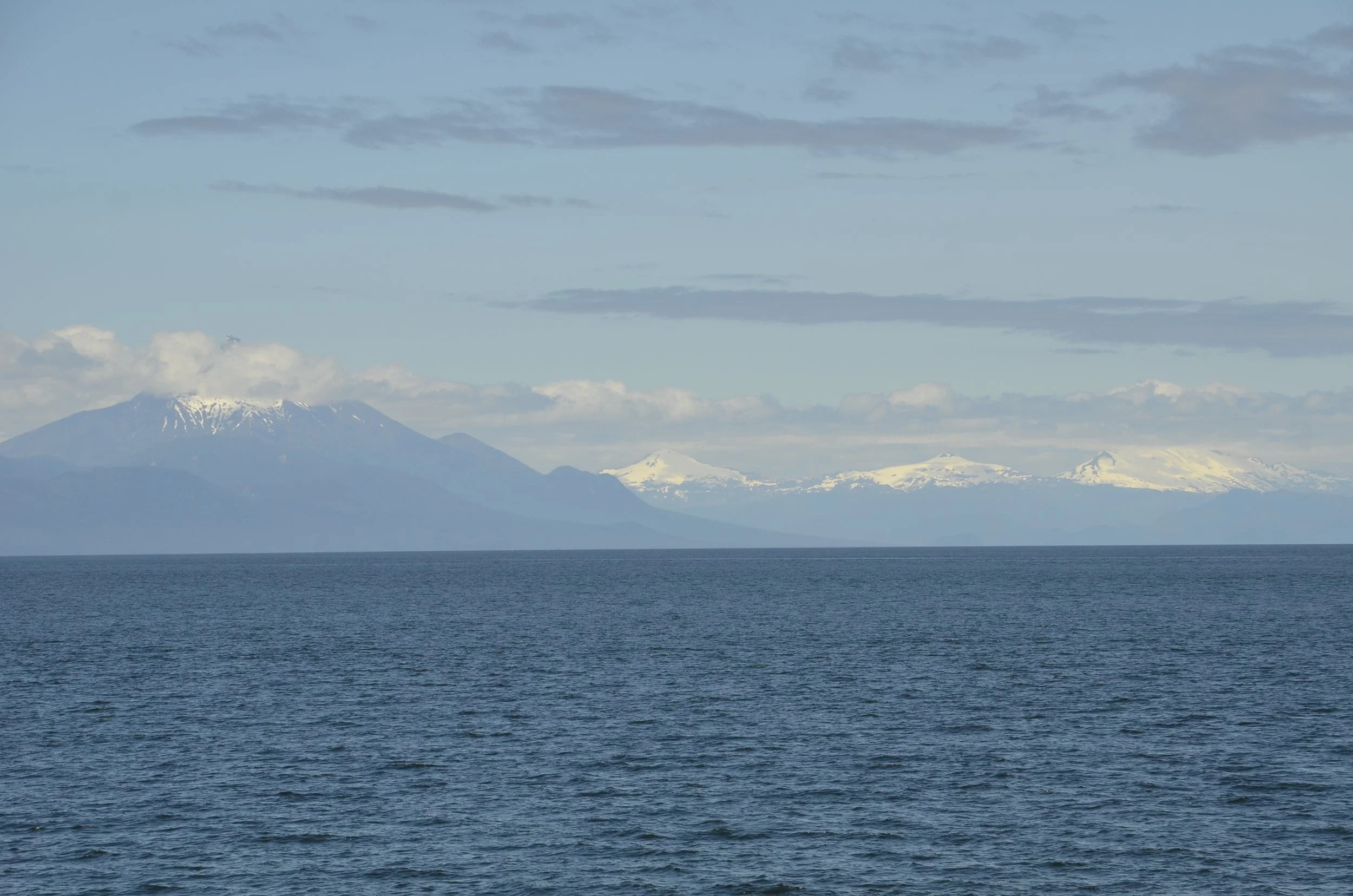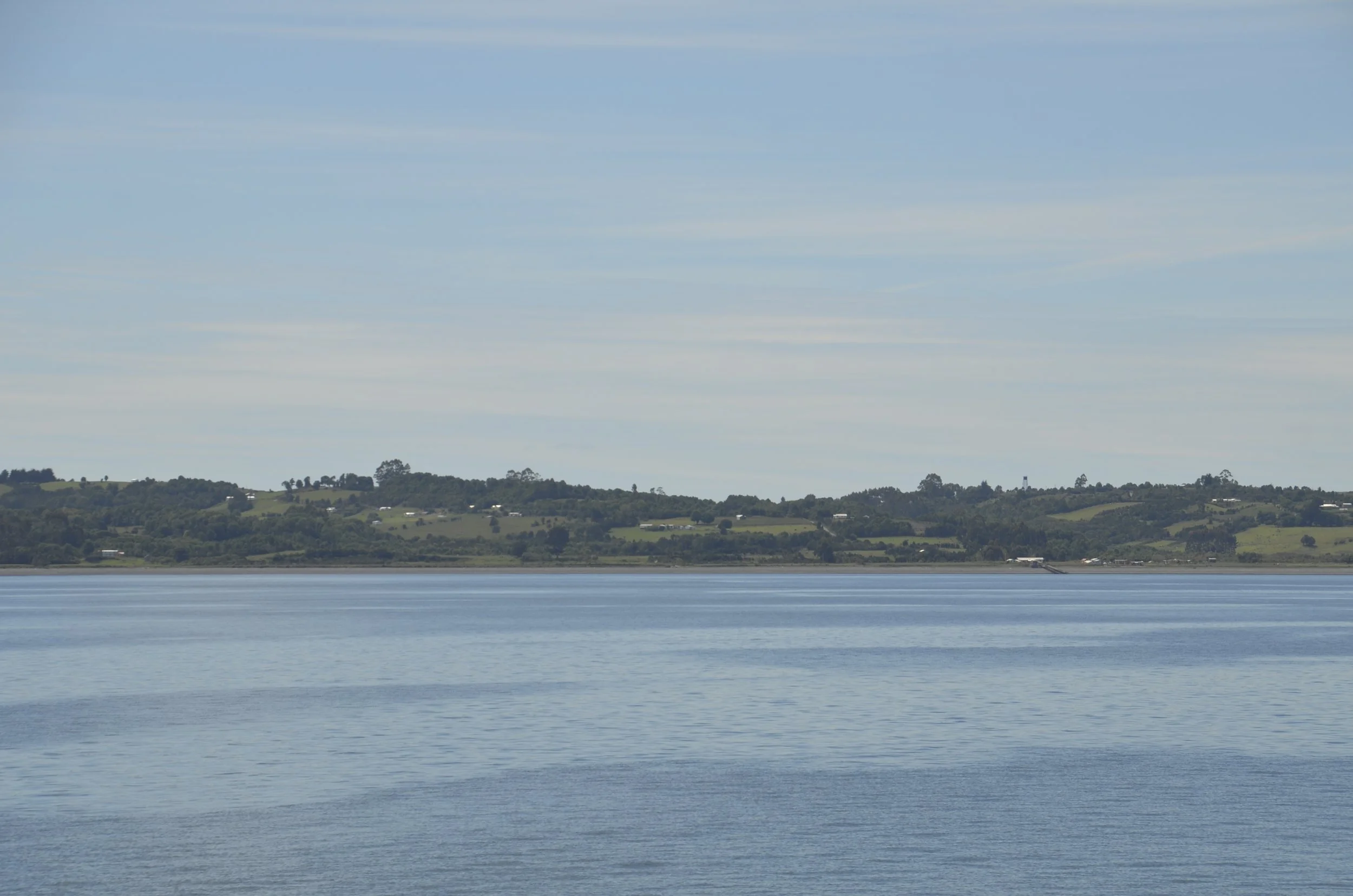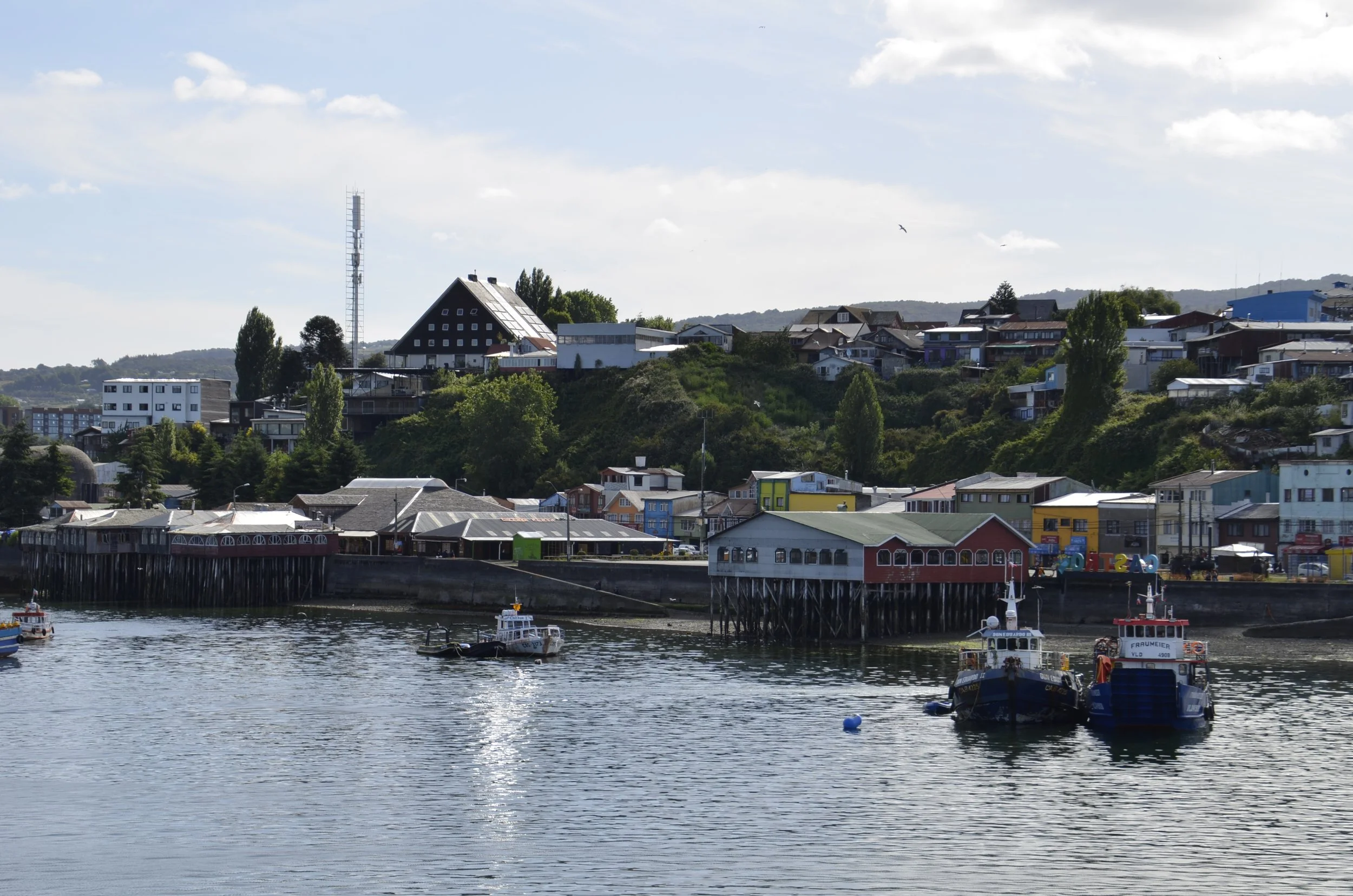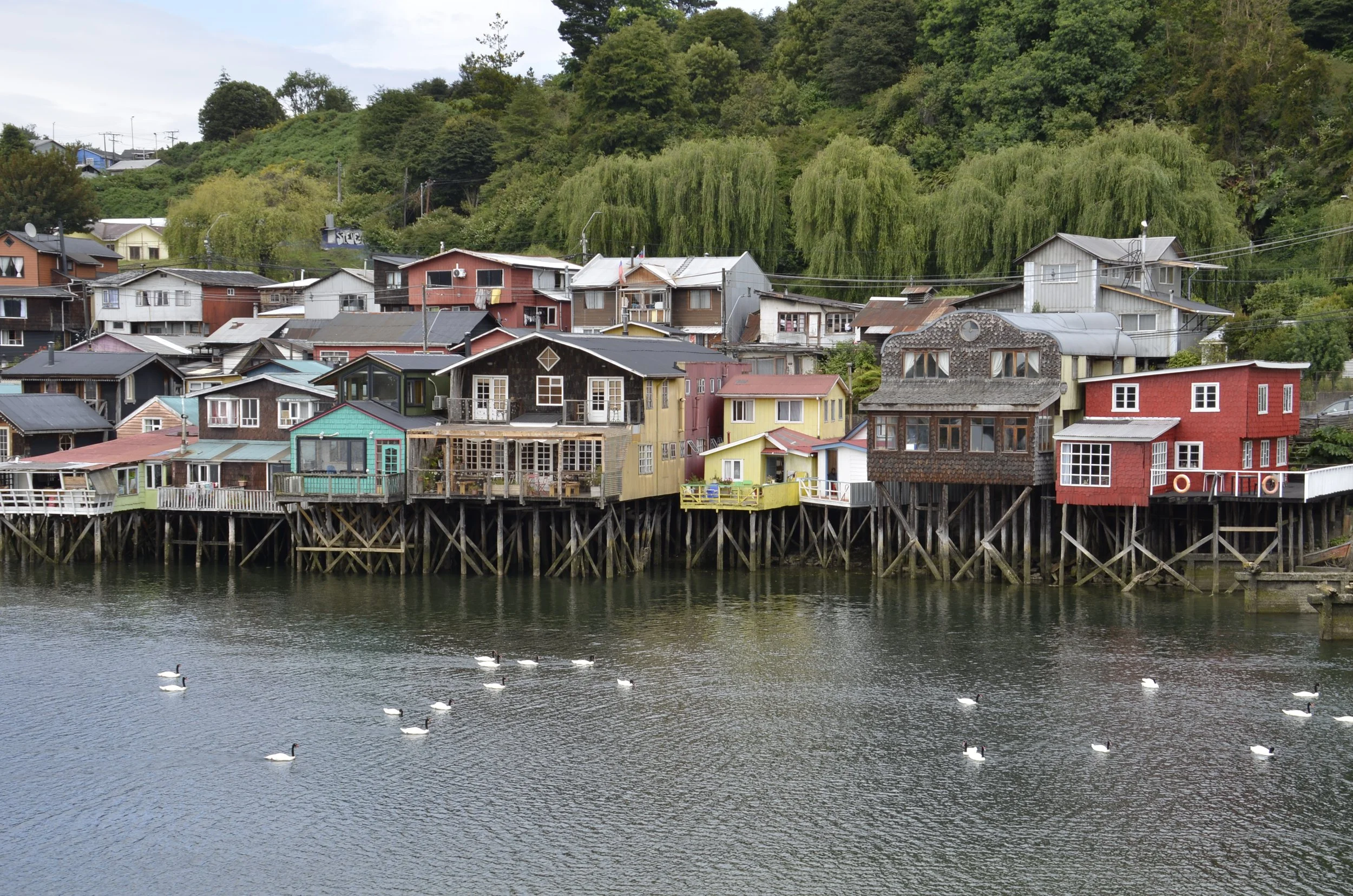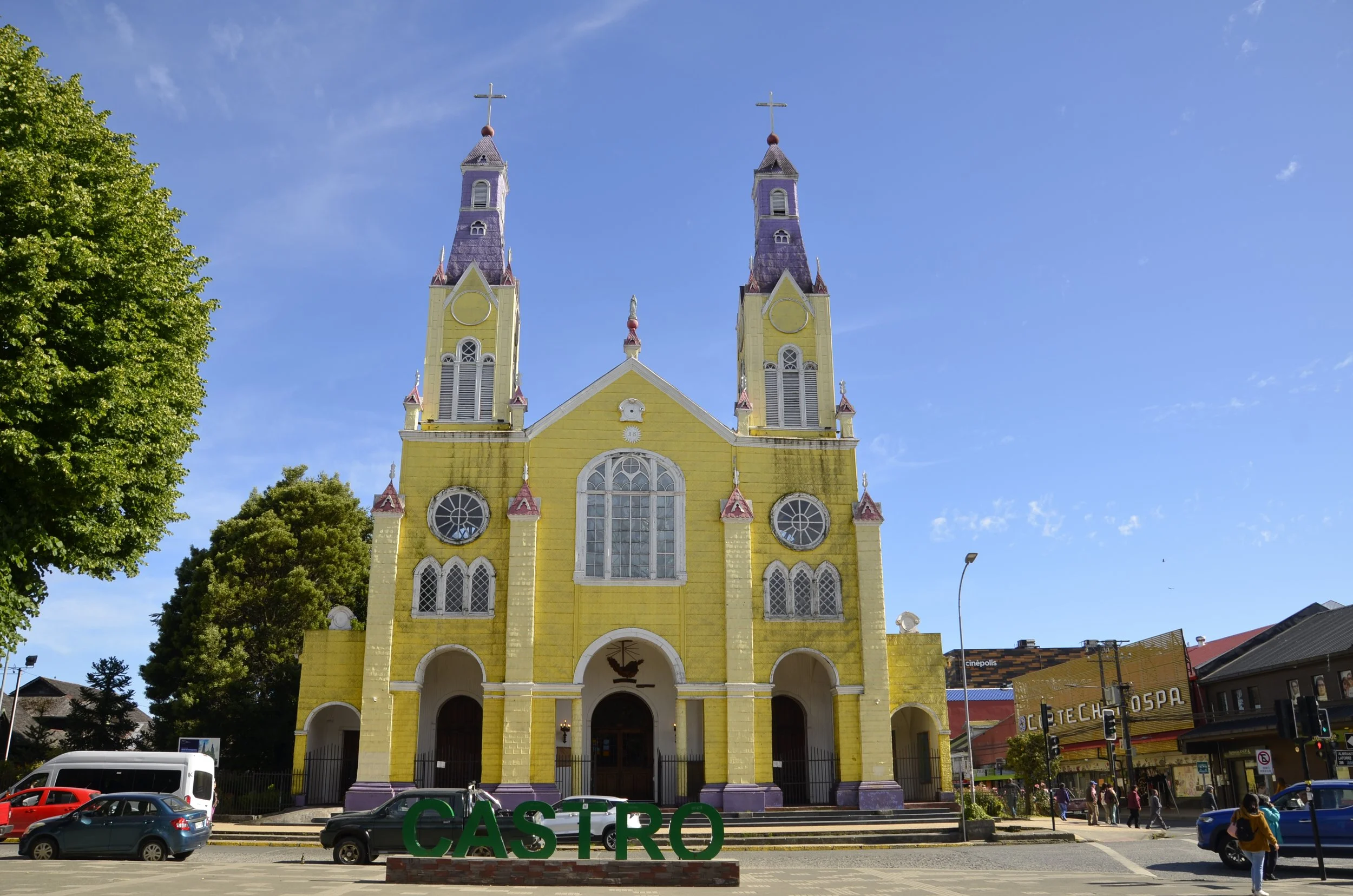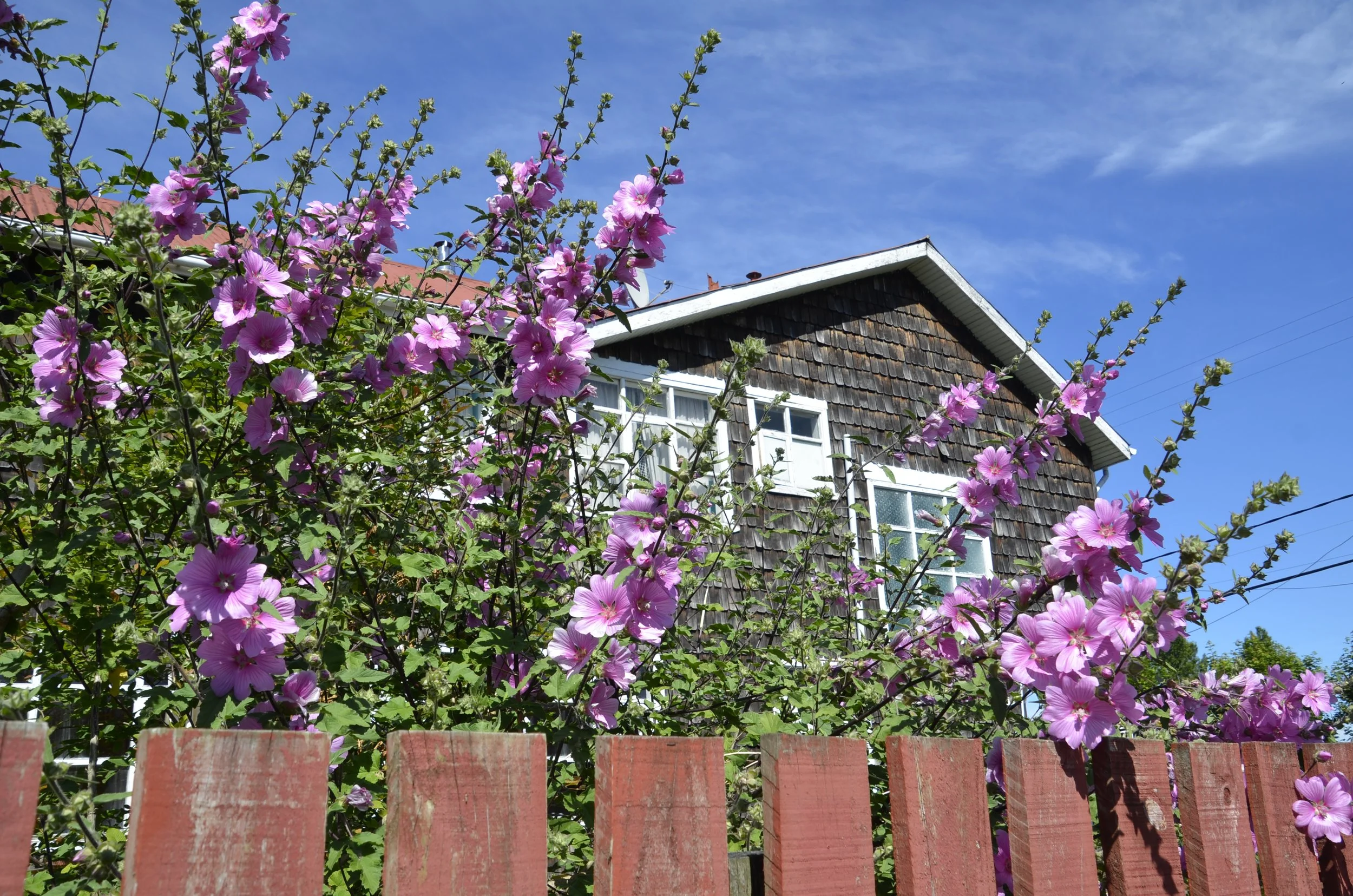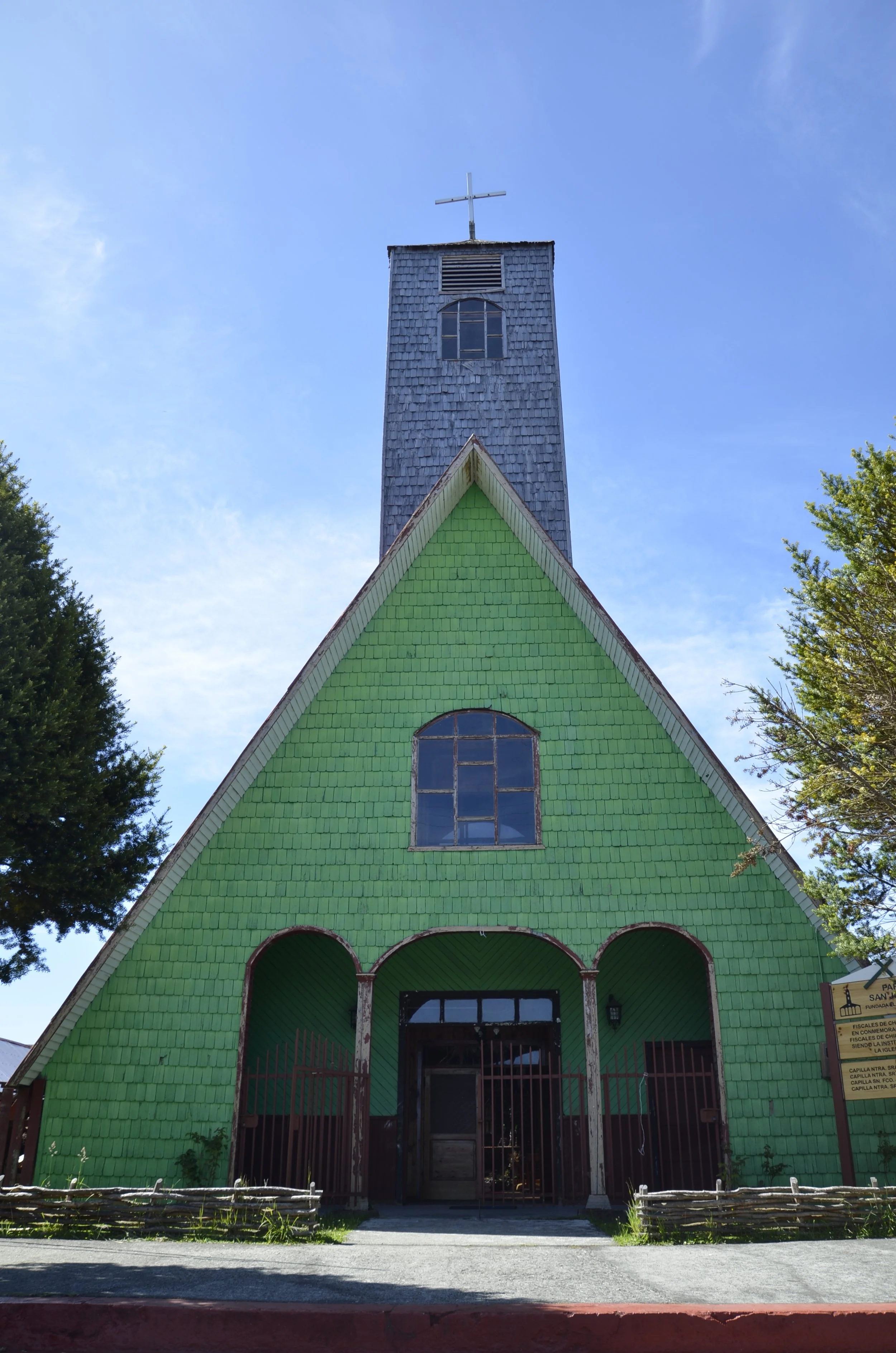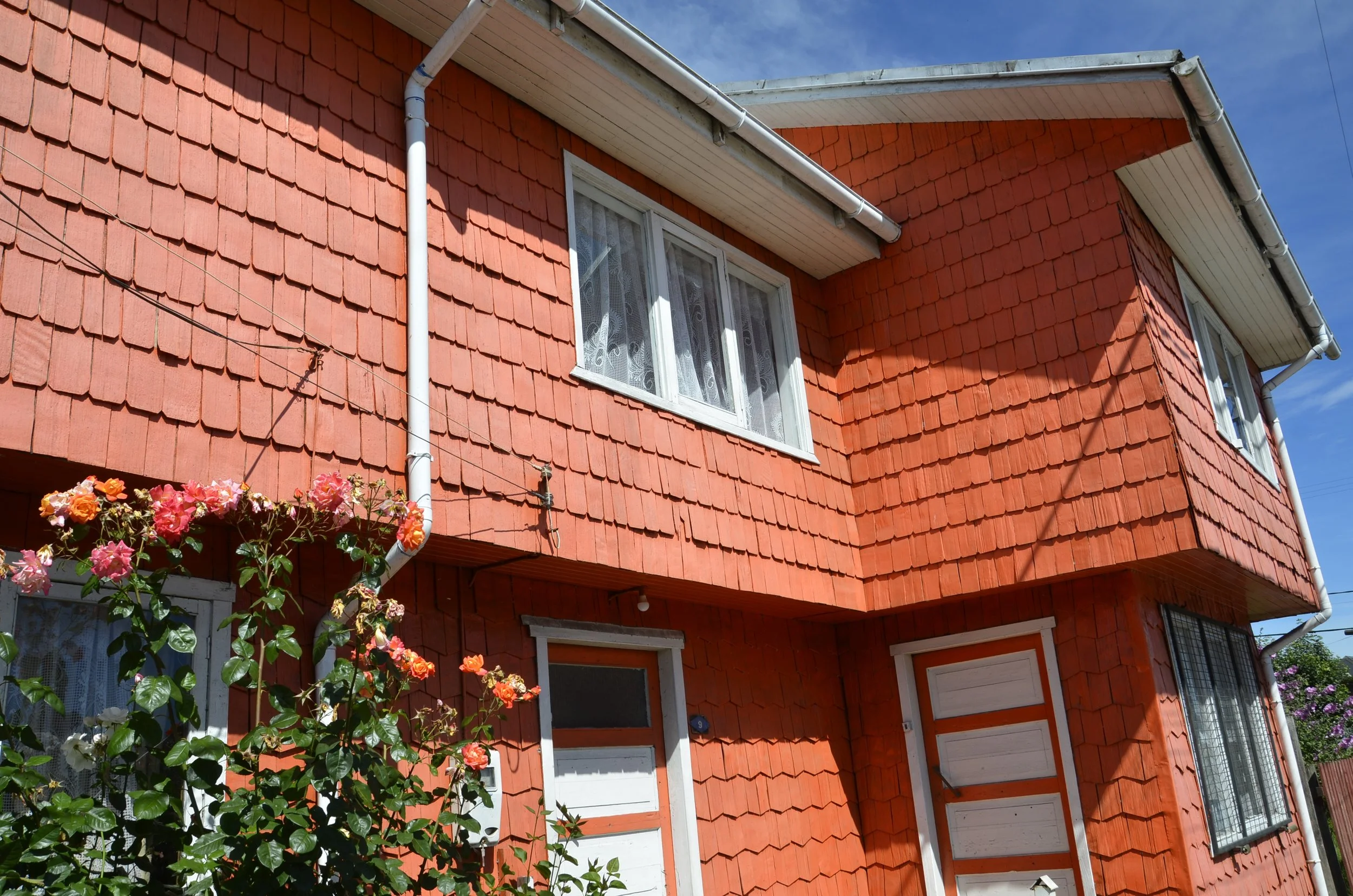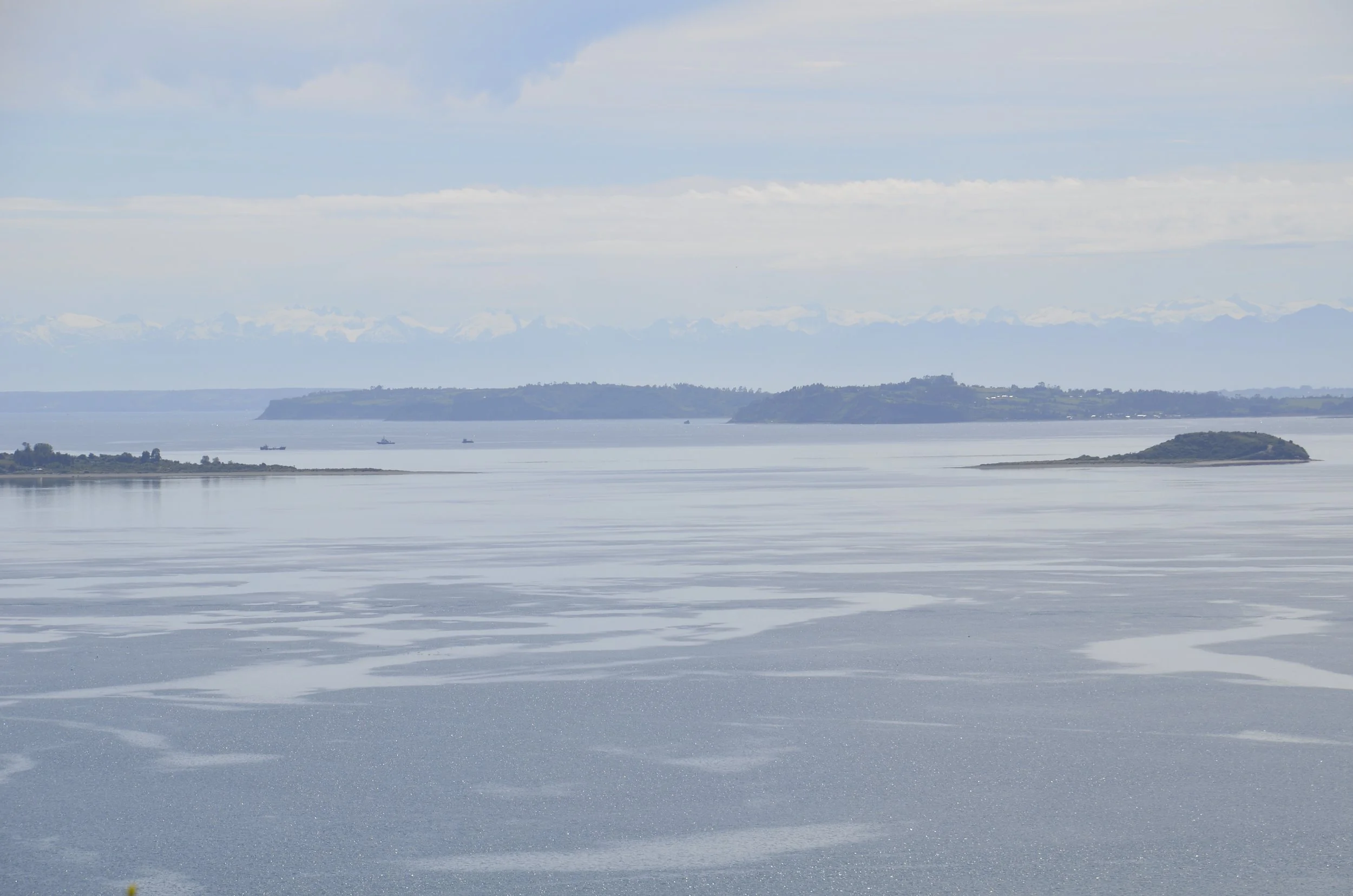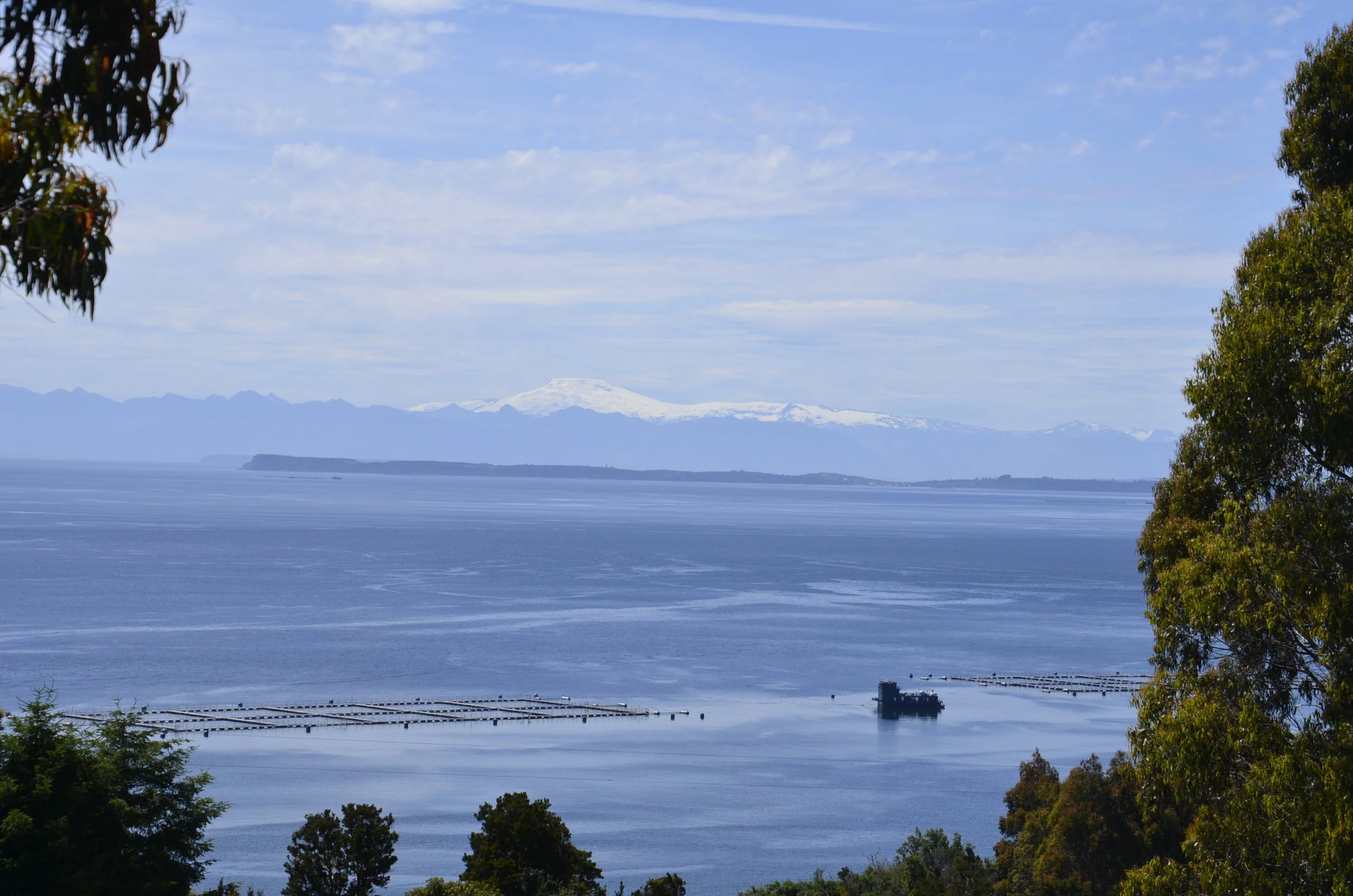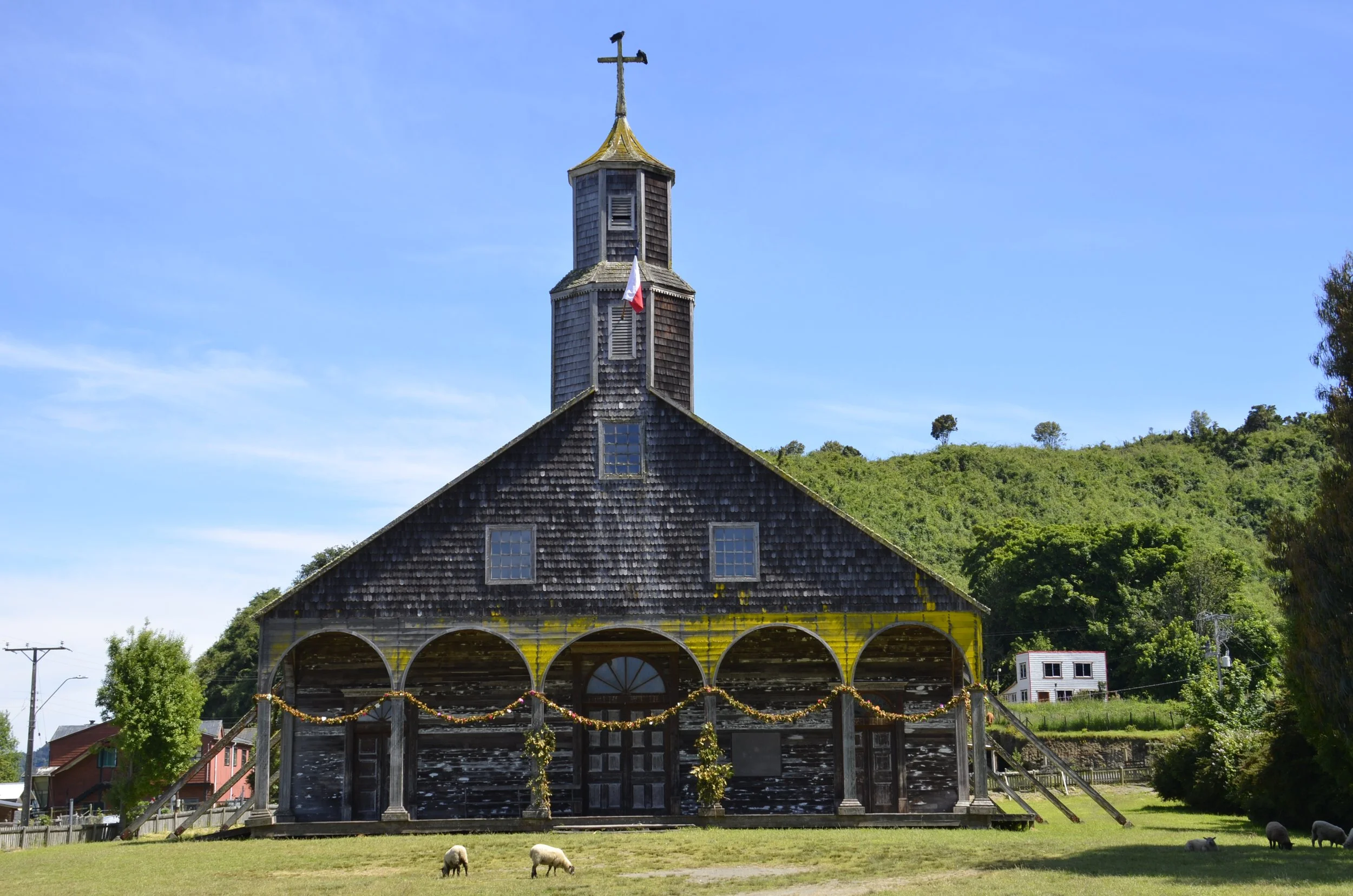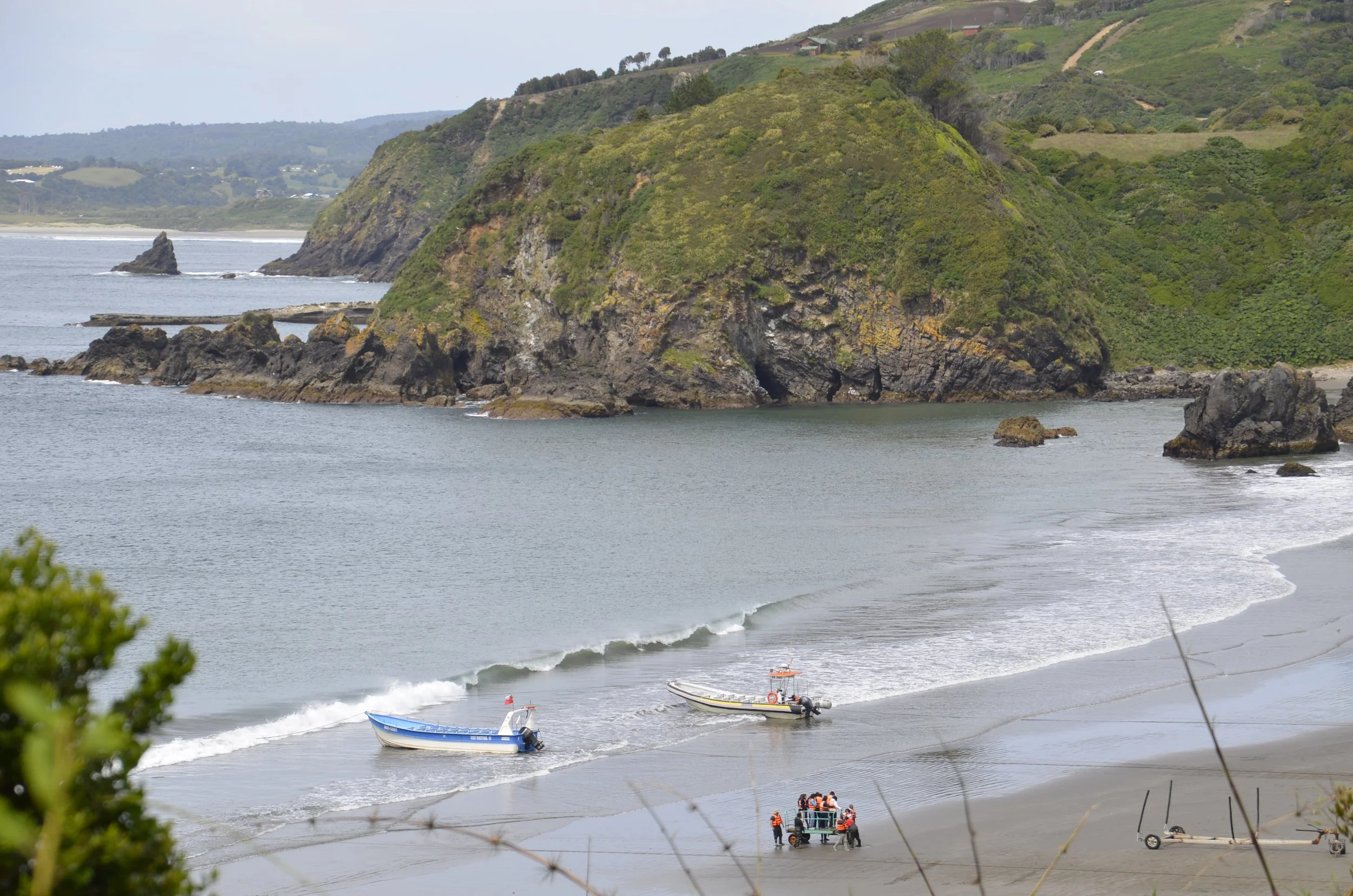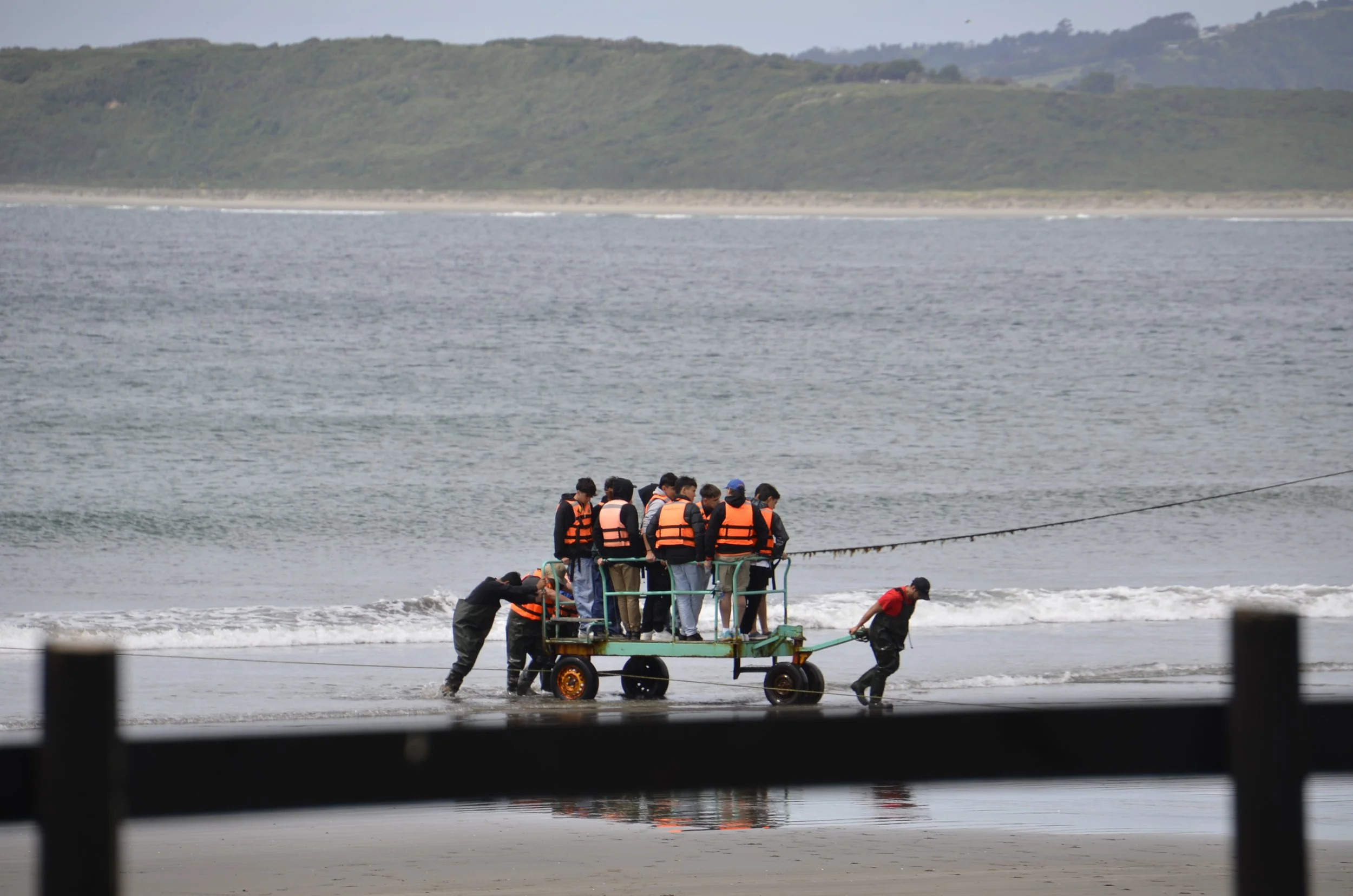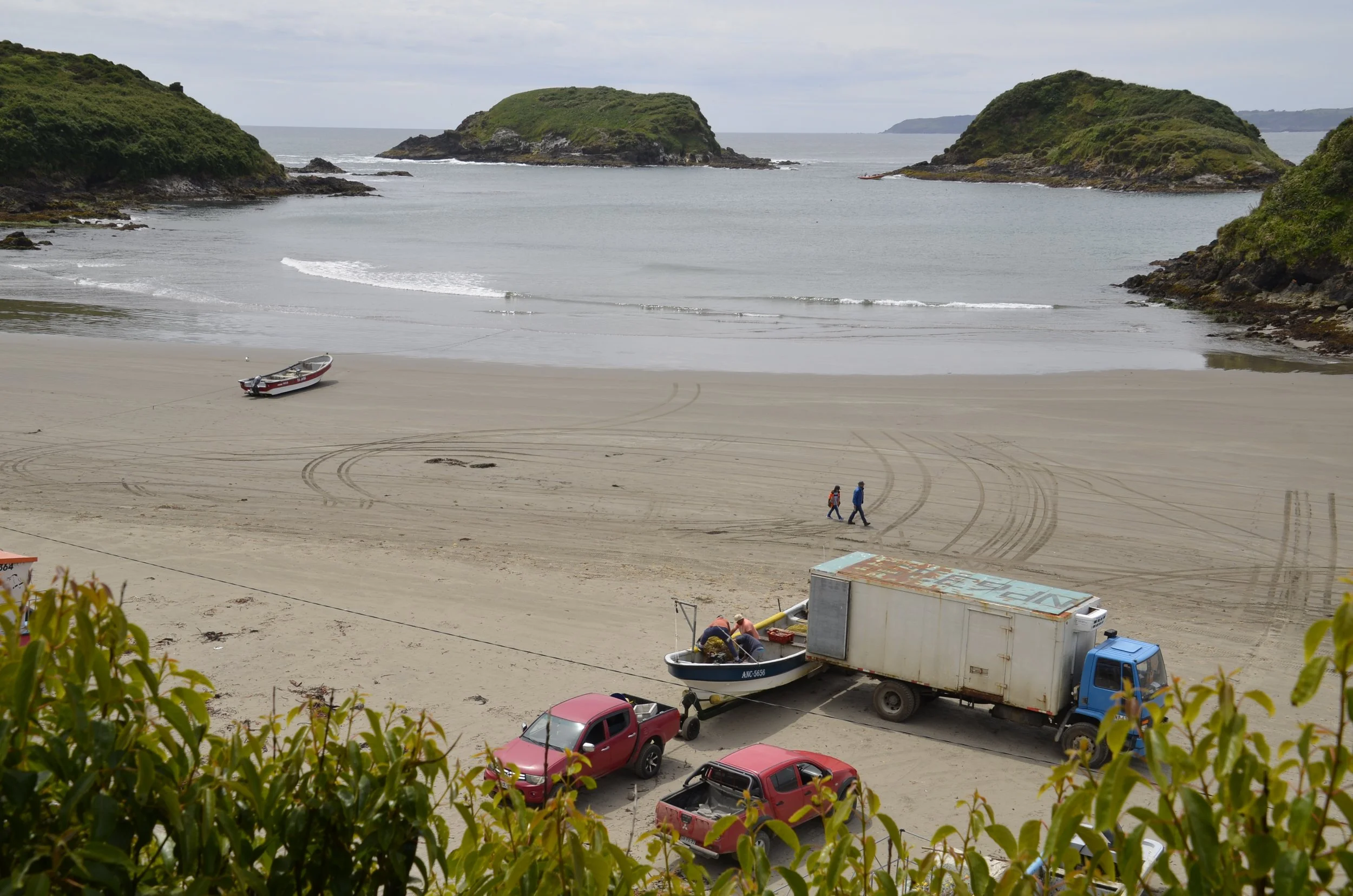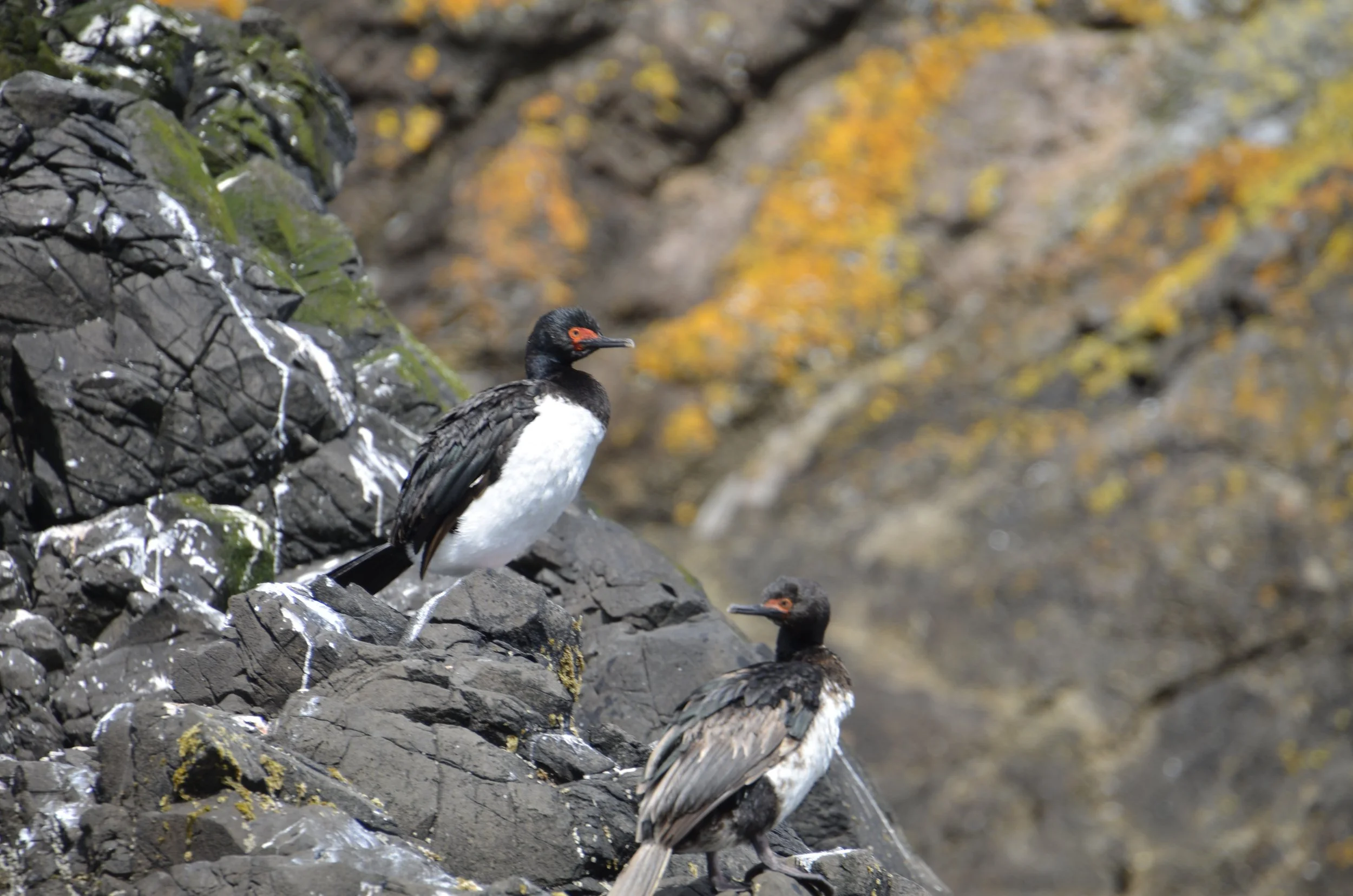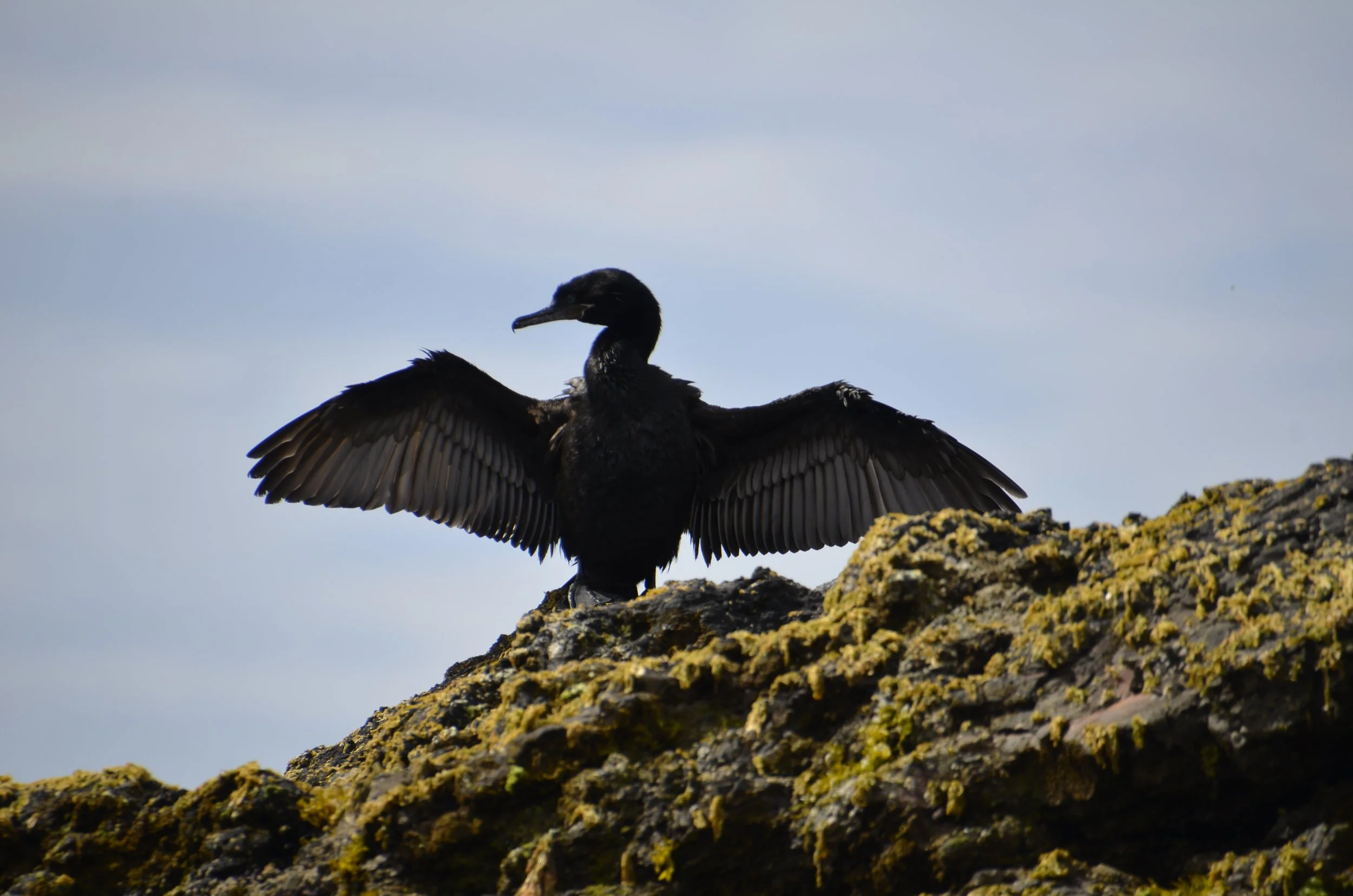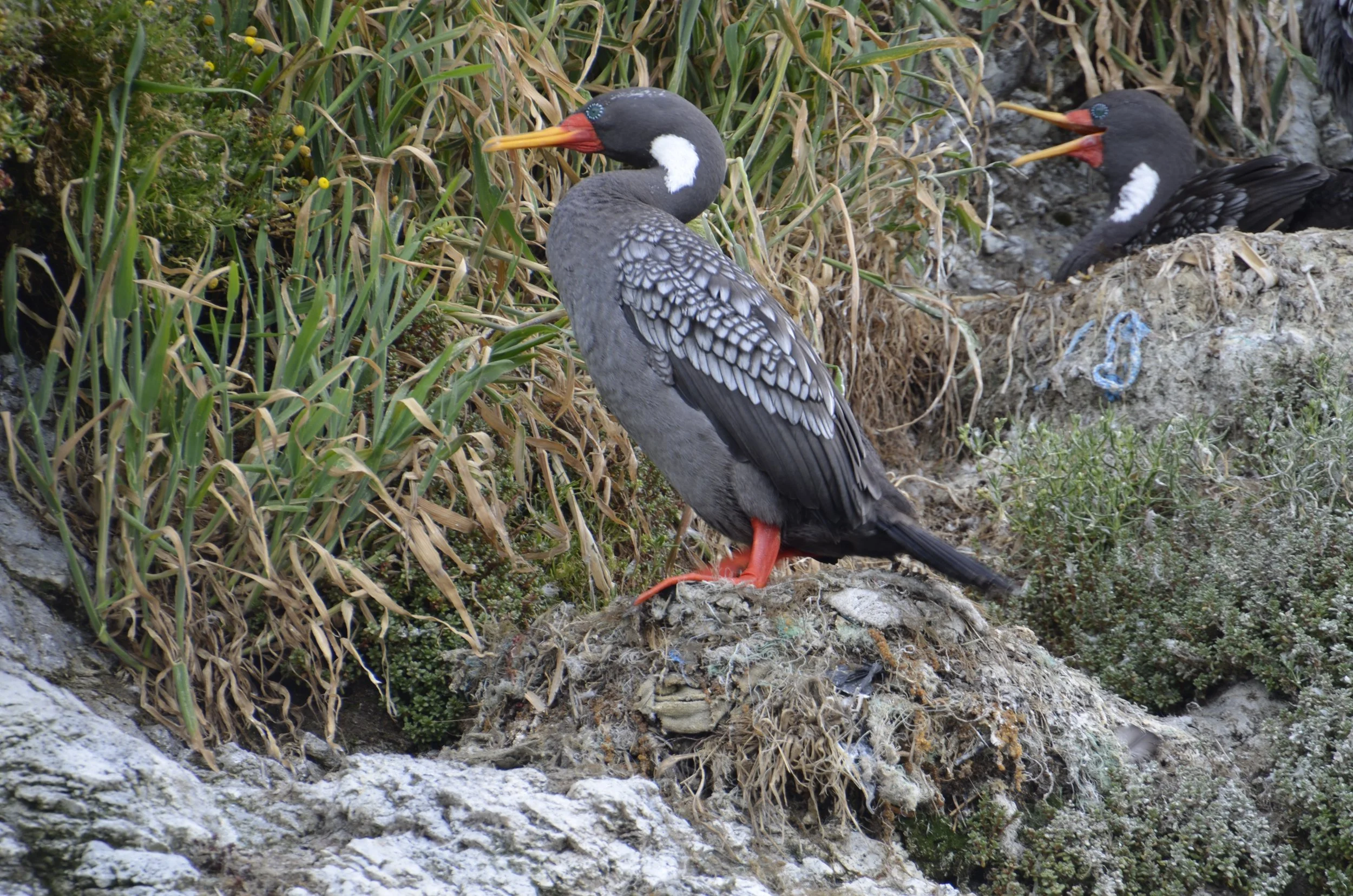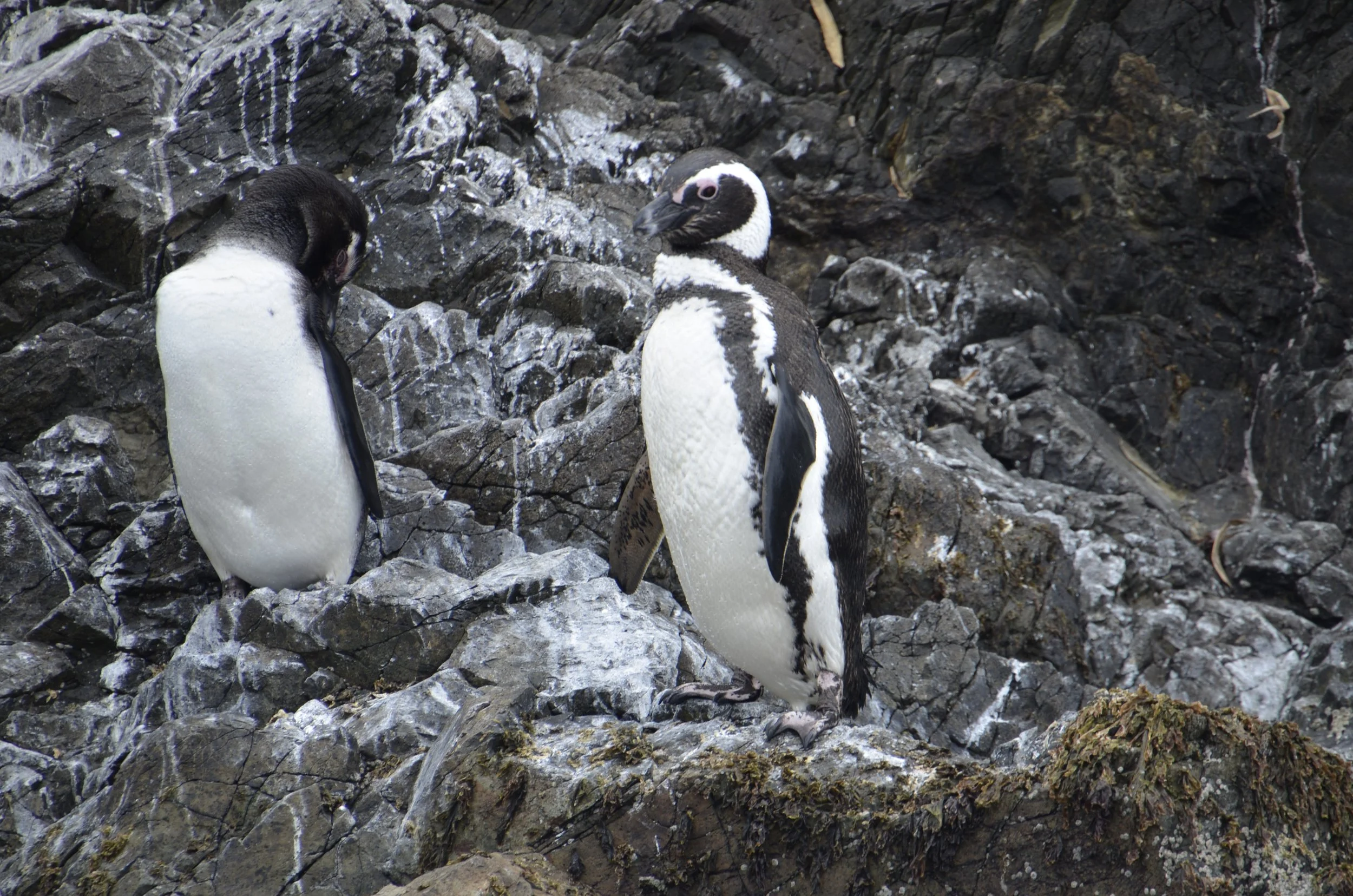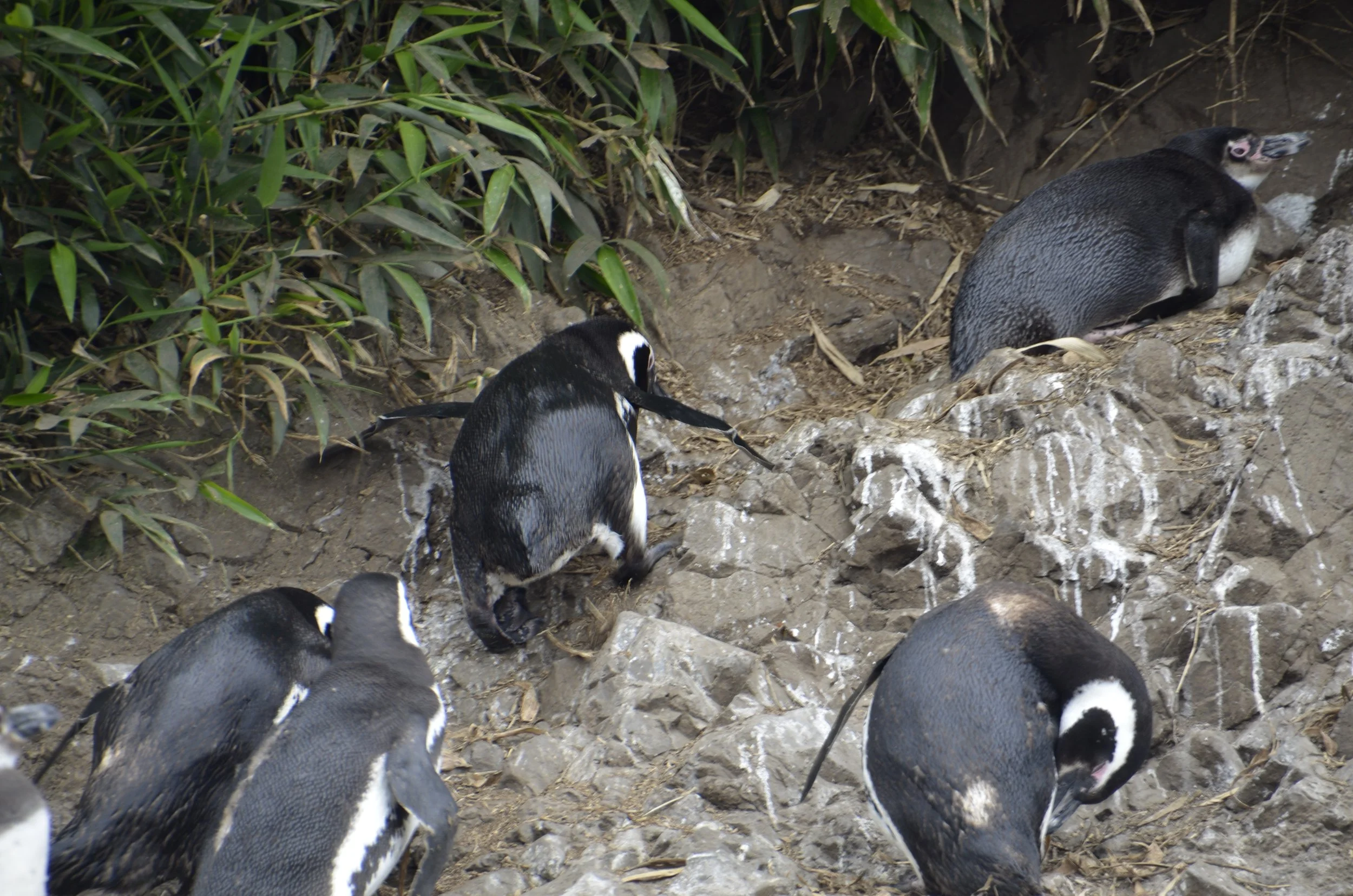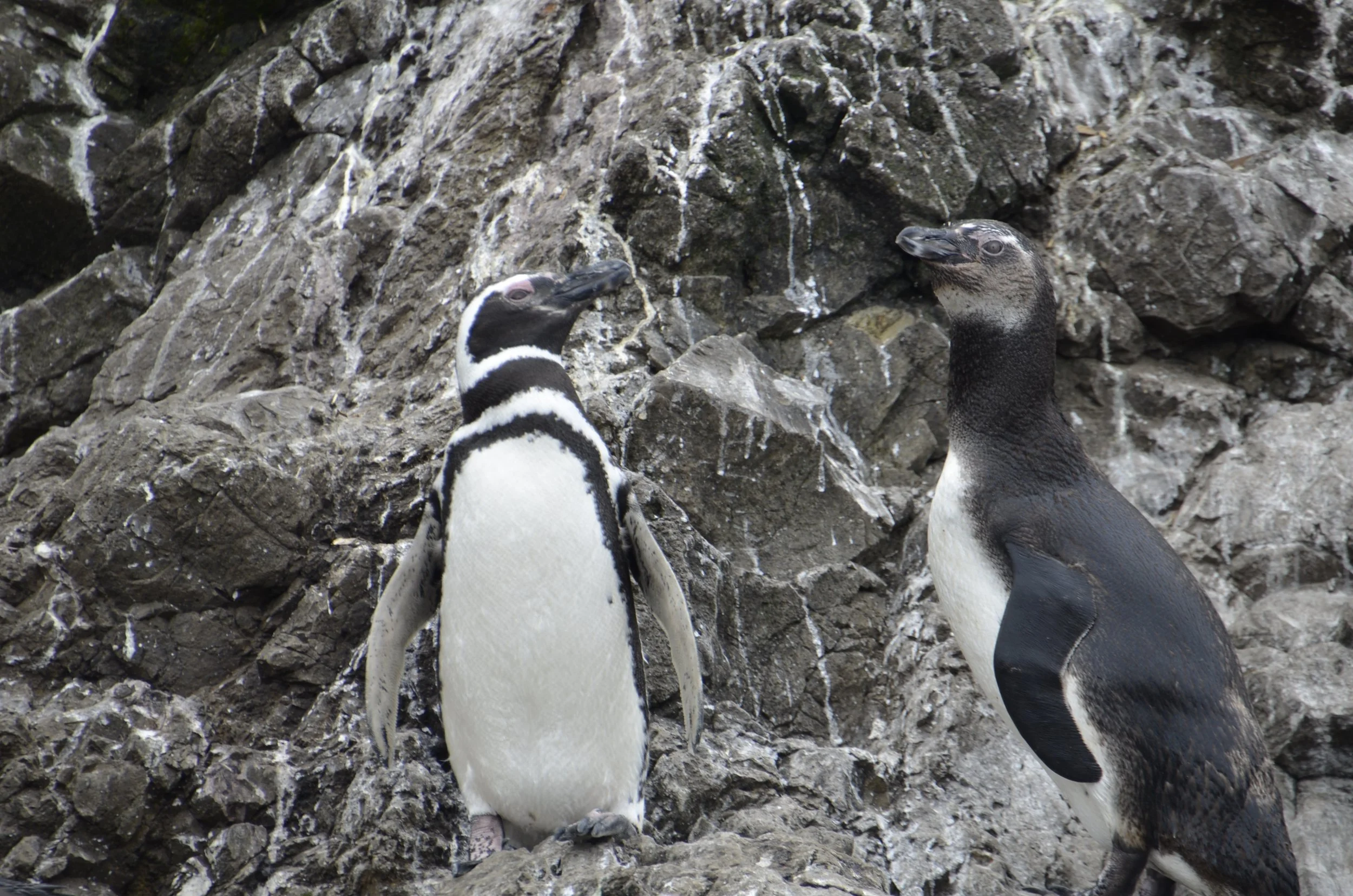Chiloe
This is an island off the west coast of Chile, but it is also the name of the province and archipelago of 30 small islands and islets.
We needed to take a ferry from the mainland at Chaiten over to Chiloe. It took 5 1/2 hrs of sailing, after 2 hrs of unloading and loading. :-( In the picture below, you can see the full size tractor trailer trucks about to drive off.
Before we left, I was smiling at a family of Black-necked Swans…
… and really grinned when the cygnet in the back climbed aboard its parent…
… and the entire family set off in grand fashion.
As we sailed away from the mainland, we could see snow-covered peaks almost the entire way -
Chiloe is celebrated for its rural roots that are still prevalent, and we loved the laid back feel as we toured.
But first we had to navigate the bustling city of Castro (40,000+ population), and it was somewhat of a rude awakening after the solitude and slow pace of southern Patagonia.
Castro is celebrated for its stilt houses…
… and you can see why the stilts are needed when it’s high tide -
Chiloe and the islands are known for their churches, which were built by German Jesuits in the 18th and 19th century as part of their missionary efforts. The one in Castro is quite colorful -
We visited the Isla Quinchao, which took only a 15 minute ferry ride to get to, and we loved its serene landscapes and sedate pace.
The siding of that house above is made of alerce shingles, from those immense “redwoods” we saw previously at the national park. This is a hallmark of architecture on the Chiloe islands.
This church has the same siding, and I enjoyed seeing the simple wooden fences all over the island, as you can see at the bottom of the above photo -
This next picture has several common characteristics of houses in this area… thin lace curtains, alerce siding painted a bright color and tall rose bushes -
From a viewpoint over the town of Achao, we could see how close the outlying islands were..
… as well as the snow covered peaks on the mainland -
This shot gave me another great view of mountains, but also reminded me to tell you about aquaculture here -
Farmed salmon (that’s what’s in the pens on the water) is big business here, and you can get fresh salmon pretty much anywhere in Chile, for a pretty good price.
This is apparently the biggest church in the archipelago, located in Quinchao, but it looked pretty deserted to us. There are even vultures on the cross!
We then headed up to the NW corner of the main island of Chiloe to see penguins. The boat operators have a novel way of getting passengers out to the boats. The boats are left at the surf line…
… and guys in rubber overalls push a cart to and from the boat, keeping the passengers nicely dry -
These offshore islets at Punihuil…
… are home to several species of cormorants…
Guanay
Sorry about the next picture, but it was the best I could get. Enlarge the picture to see the beautiful blue eye -
Neotropic
… and I was blown away by this beauty - the Red-legged Cormorant -
(check out the detail around the eye!)
There are also 2 species of penguins here, and it’s the only place in the world that they nest together. Magellanic penguins were the more numerous…
… and they have the separate dark breast band as in the one on the right, above. The Humboldt penguins have more bare flesh around their bills, and lack the breast band -
the one laying down in the upper right corner has more flesh around the bill and no breast band, thus Humboldt
These two look to me to be the two species posing side by side! L- Magellanic, R- Humboldt…
Turning now to food… one of the dishes we both wanted to try is a classic (and only served on Chiloe) — Curanto:
Historically, it is cooked in a pot that cooked underground, but no matter how it’s done today, it’s a huge amount of shellfish, chicken, pork, sausage and potatoes. It was delicious and quite filling. That bowl above was only 1 order (but satisfied both of us), and cost about $14!
Closing with a sunset view from our “stilt hotel” -

